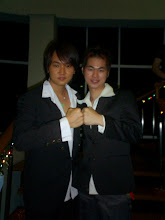
June 26 (Bloomberg) -- Two children under age 10 with terminal cancer have been recruited into an experiment testing a novel way of treating the disease by targeting stem cells.
Researchers at the Hospital for Sick Children in Toronto are administering Rapamune, an organ transplant medicine from the drugmaker Wyeth, to two youngsters with a nervous system cancer called neuroblastoma. In test tube and mice studies, the drug killed stem cells that scientists say may be responsible for driving the cancer's growth.
Since 1997, researchers have found that certain stem cells fuel tumors in leukemia and in breast, lung and brain cancers. Scientists at universities and biotechnology companies led by Infinity Pharmaceuticals Inc. of Cambridge, Massachusetts, and Australia's ChemGenex Pharmaceuticals Ltd. are developing treatments to block the cells. The Toronto test is the first to use an existing medicine on the cells in neuroblastoma patients.
``If you can therapeutically target cancer stem cells -- the cells that are resistant to chemo and radiation -- you have a chance of curing cancer,'' said Judy Lieberman, a researcher with the Immune Disease Institute, a Boston-based affiliate of Harvard Medical School. ``It can revolutionize cancer therapy.''
In the U.S., 650 children are diagnosed each year with neuroblastomas and four out of five victims older than age 1 die within five years. The experiment in the two young patients is the latest in a handful of human tests by scientists to determine whether attacking stem cells can thwart cancer, researchers say. The study took an innovative approach by testing thousands of existing drugs against cells drawn from the patients' own tumors.
`Bullet-Proof Vests'
Stem cells are capable of copying themselves and turning into other cell types. The new treatment theory is based on the idea that in some cancers, stem cells get stuck in a pattern of endless self-renewal. Research has found that these stem cells may be immune to chemotherapy and radiation, making conventional cancer treatments fail.
``Standard chemo is like using a bomb to kill the cells,'' Lieberman said in a June 18 telephone interview. ``But the cancer stem cells are wearing bullet-proof vests.''
The strategy of finding and attacking these cells results from pioneering work by John Dick, a University of Toronto scientist who in 1997 showed that certain cells in leukemia propelled the growth of new cancer cells. Last year, he identified similar cells in colon cancer. His research indicates that some cells, for reasons not yet known, are more prone than others to propel the unchecked growth that typifies cancer.
From Lab to Clinic
``Our data show that there are some cells that are more potent at sustaining the growth of a cancer than others,'' Dick said in a June 18 telephone interview. ``These are the cells we called cancer stem cells.''
Researchers are trying different strategies to disable the cancer-initiating cells. The Hospital for Sick Children researchers tried the theory by testing thousands of approved drugs in lab dishes and animals to see whether any could inactivate the cells.
``We chose approved drugs so we could very quickly go from the lab to the clinic,'' said Kristen Smith, one of the Toronto researchers, in a June 13 interview in Philadelphia, where she presented her findings to a meeting of the International Society for Stem Cell Research.
After the researchers found that Rapamune, also known as rapamycin, showed activity against the cells, Canadian regulators said the drug could be tested in the children because no other treatment was likely to work for them. The researchers wouldn't identify the patients because clinical trials are confidential.
Killing Tumor Cells
The drug, which also is used to coat Johnson & Johnson's Cypher heart stent to keep cleared arteries from reclosing, may work by inhibiting a gene that affects cell growth, Smith said. The children were given the drug over the past few months, with treatment on the second child ending about a month ago, she said. She wouldn't provide details on their condition and cautioned that it's too early to consider the drug a proven treatment for neuroblastomas.
Smith and her colleagues found that rapamycin decreased the number of tumor-forming cells in laboratory dishes while leaving other cells within the tumors intact. When they injected cancer- starting cells from the children's tumors into mice, the rodents grew their own tumors. When they treated the mice with rapamycin, the tumors shrank.
``This suggests that we killed most of the tumor-initiating cells,'' she said.
The Toronto research was supported by the James Fund, an organization started by Sydney and Pam Birrell in honor of their son James, who died of a neuroblastoma in 2001 at age 8.
The foundation has provided seed grants for ``crazy ideas'' that might give kids a better shot at surviving, said Sydney Birrell in a June 16 telephone interview. He said he hopes doctors will be able to do for children with neuroblastomas what they've accomplished for kids with leukemia.
``Eighty-five percent of those kids used to die,'' he said. ``Now 85 percent of them survive.''
To contact the reporter on this story: Rob Waters in San Francisco at rwaters5@bloomberg.net.
